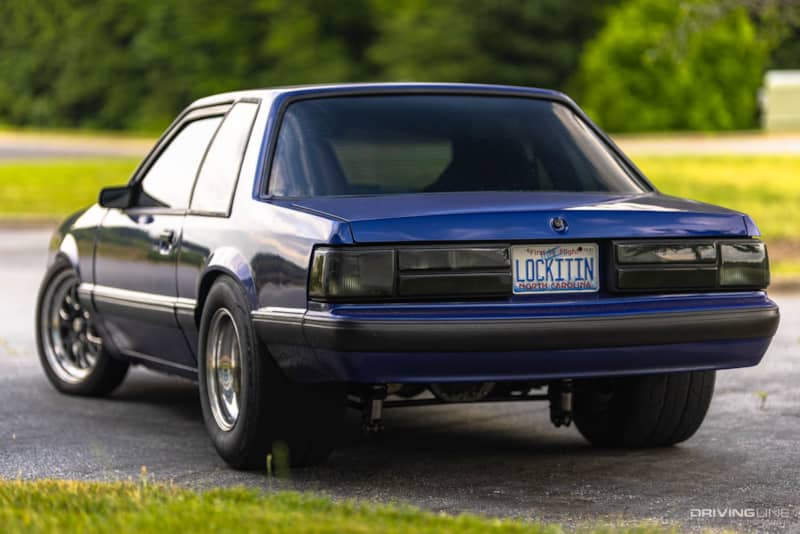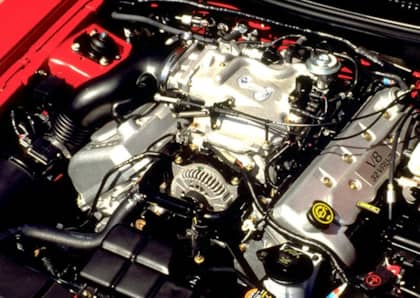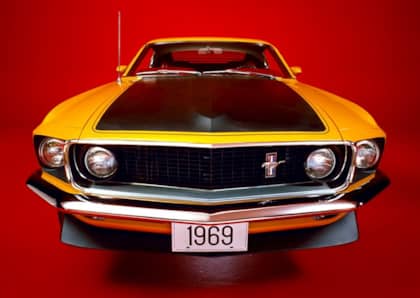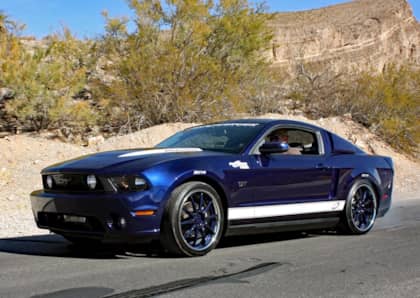Mod Motor Or 5.0? Your Guide To Getting The Most From Your '90s-Era Ford Mustang V8
The SN95 Ford Mustang was built between 1994 and 1998 (followed by a 1999 refresh known as the “New Edge”). The fourth-generation pony car is notable not just for helping to modernize Ford’s affordable muscle machine, but for also offering the option of mixing the past and the present at ordering time. For its first two years of production, GT models carried over the 5.0L pushrod V8 that had been sold with the Fox-body cars that predated it. Then, starting in 1996, the Mustang moved to the overhead camshaft 4.6L V8 that introduced the company’s “modular” engine design (named after the modular assembly plant where they were built) that came to dominate the next two decades of Ford’s eight-cylinder production.

This split means that anyone searching for a SN95 Mustang project has to make a choice between which of the two engine platforms they want to build. With swappability extremely easy, there’s no need to restrict yourself to specific model years either, as you can easily install a modular or pushrod engine in any version of the car. Which is the better choice for SN95 Mustang owners: the 5.0L or the 4.6L V8? Here’s what you need to know about each motor so you can make the right decision for your Mustang build.

Stock 5.0L V8 vs. Stock 4.6L V8
The 1994-1995 Mustang GT (and the one-year-only Mustang GTS) were equipped with a 215 hp version of the brand’s 5.0L V8, a motor that matched the one found in the Fox Mustang with the exception of its pistons and its intake manifold (which sat lower to improve hood clearance). This engine also produced 285 lb-ft of torque. There was another 5.0 on offer during the same period, which delivered 240 hp in the Cobra version of the car while matching the GT’s torque.

The 1996-1998 Ford Mustang GT’s 4.6L delivered exactly the same output, which no doubt helped the marketing department keep buyers from looking over their shoulder at last year’s model. The Cobra also migrated to a 4.6L, but made use of an aluminum block rather than iron and featured a set of 32-valve, dual-overhead camshaft heads that pushed power up to 305 horses and 300 lb-ft of torque.
Head-To-Head Comparison
If the engine output is identical, then what does it matter whether your SN95 has a 5.0 or a 4.6 under the hood? It turns out that looking beyond the spec sheet reveals several key differences between the drivetrains that can make a difference in your ownership experience.

In terms of performance, numbers from the era indicated a 0-60 mph time of just a tick over six seconds for 5.0L GT cars, with the 5.0L Cobra slicing off a couple of tenths. The quarter mile shows a similar differential, with the Cobra leading the way, just barely, with a 14.7 second run.

The 4.6L GT checks in slightly slower (in the 6.5 second range to 60-mph, and 15.1 seconds in the quarter mile), but the Cobra is considerably faster: 5.5 seconds and 13.9 seconds for each respective measure. If you’re going to stay stock, the 32-valve Cobra is the clear winner in a straight line.

In terms of every day driving feel, however, there are those who prefer the low-end torque deliver of the 5.0L, which provides its full load of twist at roughly 3,000 rpm, which is a thousand revs lower than the 4.6L. Countering that is the smoother character of the 4.6 versus the 5.0, a product of its more modern design, which despite its additional complication has a solid reputation for reliability as well.
Making Those Mods
Of course, not everyone wants to stay stock. It’s here that you find the most divisive opinions regarding which of these two Ford Mustang V8 engines is the best choice for making the most power in an SN95-generation car.

Once upon a time, parts support for the modular motor was not even close to being in the same league as the legions of aftermarket companies producing upgrades for the 5.0. That’s no longer the case, as nearly 30 years later the 4.6 has mostly caught up to its sibling in terms of availability and expertise. For the most part, there are good options for all of the standard bolt-ons—headers, intakes, exhausts, superchargers, ECU tunes—for both engine designs.

That being said, each motor has its own particular strengths. In general, modifications made to a 5.0 are less expensive due to the simplicity of the motor (a single camshaft versus two, or even four, for the 4.6), and they can be easier to work on for beginners looking to throw on a bunch of bolt-ons and call it a day. The flip side of that is a 5.0 is often be less streetable the more power it produces, and its reliability sometimes feels inversely proportional to its dyno numbers.

Where the 4.6L excels is in staying street-friendly even with bigger horsepower numbers. It also offers easier tuning on the electronics side of the equation, and is better able to handle forced induction without causing reliability concerns. The latter is especially true of the Cobra cars, whose Teksid-cast aluminum blocks are extremely resistant to high levels of boost. Yes, there’s a learning curve dealing with an overhead cam motor, and working on engine internals can take longer and feel more frustrating to first-timers, but neither of these issues are huge roadblocks in building more power.
Looking Past The Engine Bay
Keep in mind that there’s more than just engine choice to consider when purchasing an SN-95 Mustang. The early Mustang Cobras come with brakes and suspension that are a cut above the standard GT, and the same is true of the 4.6L 32-valve cars that followed. Each of these models are relative bargains today due to their modest (from a modern perspective) power output, making them the ones to target over the standard GT.

Whichever route you take, you’ll no doubt have a good time with the fourth-generation Mustang. One of the most overlooked classic muscle cars out there, there’s plenty of tire smoke and V8 rumble to be had with either version of Ford’s 90s-era pony car.











